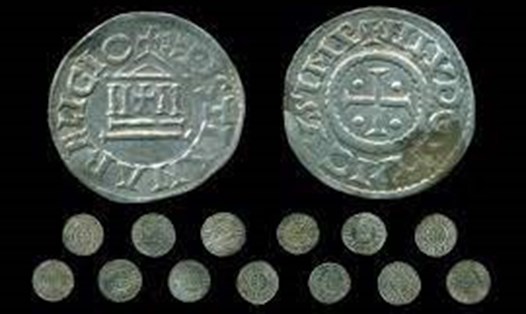According to Daily Mai, coins were minted in the 9th century during the Carolingian Dynasty, making it the largest amount of money ever found in Poland.
Most of the coins date back to the reign of the Carolingian emperor Louis the Pious - who ruled from 814-840. The remainder was cast during the short reign of his son, Charles the Bald - who ruled from 875-877.
All have a special mark of the Carolingian Dynasty, with crosses and Latin characters. It is very rare to find them in Poland, because this area is outside the borders of the empire. Only three Carolingian copper have been found in the north of the country.
The research team believes that the money was part of a huge bribe spent by Charles the Bald to keep the Nordic people (the Viking) from encroaching on Paris - the capital of the Carolingian Dynasty.
"In the 9th century, there was a clear increase in the threat of the Viking encroachment on Western European encroachments," said archaeologist Lukasz Szczepanski. The besiege of Paris in 845 was the peak of this invasion."
Researchers are still looking into exactly where the coins were cast. They hope to distinguish their origin by studying the shapes of the Latin letters and other characteristics of them.








